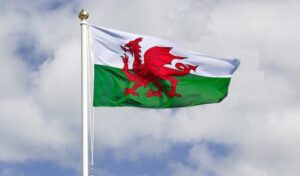

X
This site uses cookies. By continuing to use this site you agree to our use of cookies. To find out more, see our Privacy Policy and Cookie Policy.

Flags are more than just pieces of fabric. They are powerful symbols that convey a sense of identity, belonging, and heritage. Throughout history, flags have played a pivotal role in shaping and reflecting cultural identity and heritage. They encapsulate the essence of nations and communities. They display the values, history, and aspirations of a culture in a single emblem. The choice of colours, symbols, and patterns on a flag speaks volumes about the cultural heritage it represents.
Flags have the power to preserve and celebrate cultural traditions and historical events. Many flags incorporate symbols and motifs to represent significant moments in a nation’s past. The Welsh dragon on the flag of Wales, for instance, is a nod to the country’s mediaeval history and its connection to Arthurian legend.

In many culturally diverse societies, the flag acts as a unifying symbol that brings together people from various backgrounds. For example, the flag of India features multiple colours representing different religions and communities coexisting harmoniously within the nation.

Flags often symbolise political sovereignty and autonomy. In regions striving for independence or self-governance, flags become potent tools for expressing aspirations. For example, the flag of Catalonia has distinctive yellow and red stripes. These represent the region’s long-standing desire for autonomy within Spain.
A culture’s core values and beliefs can be symbolised on its flag. The flag of Saudi Arabia, with its Islamic inscription and sword, represents the nation’s deep-rooted religious and cultural significance. Flags can also become cultural artefacts. They are displayed in museums, showcased during ceremonies, and featured in artworks. The intricately designed flags of Native American tribes, for example, showcase indigenous artistry and are significant representations of cultural heritage.

Flags have a profound impact on shaping the identity of a nation or group of people. They are the essence of cultural heritage, and display history and tradition in a way that nothing else can. They’re certainly not just pieces of cloth. With their colours, symbols and designs, they signify so much for so many.